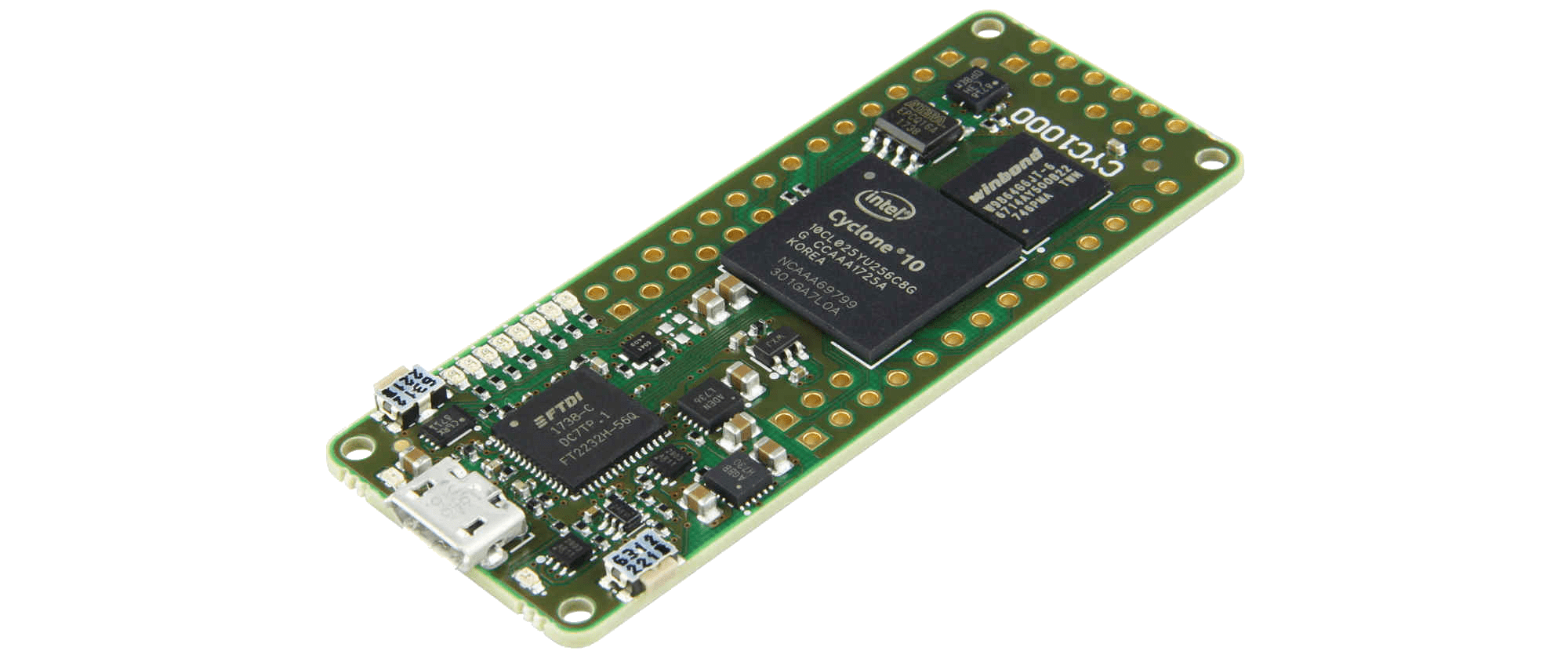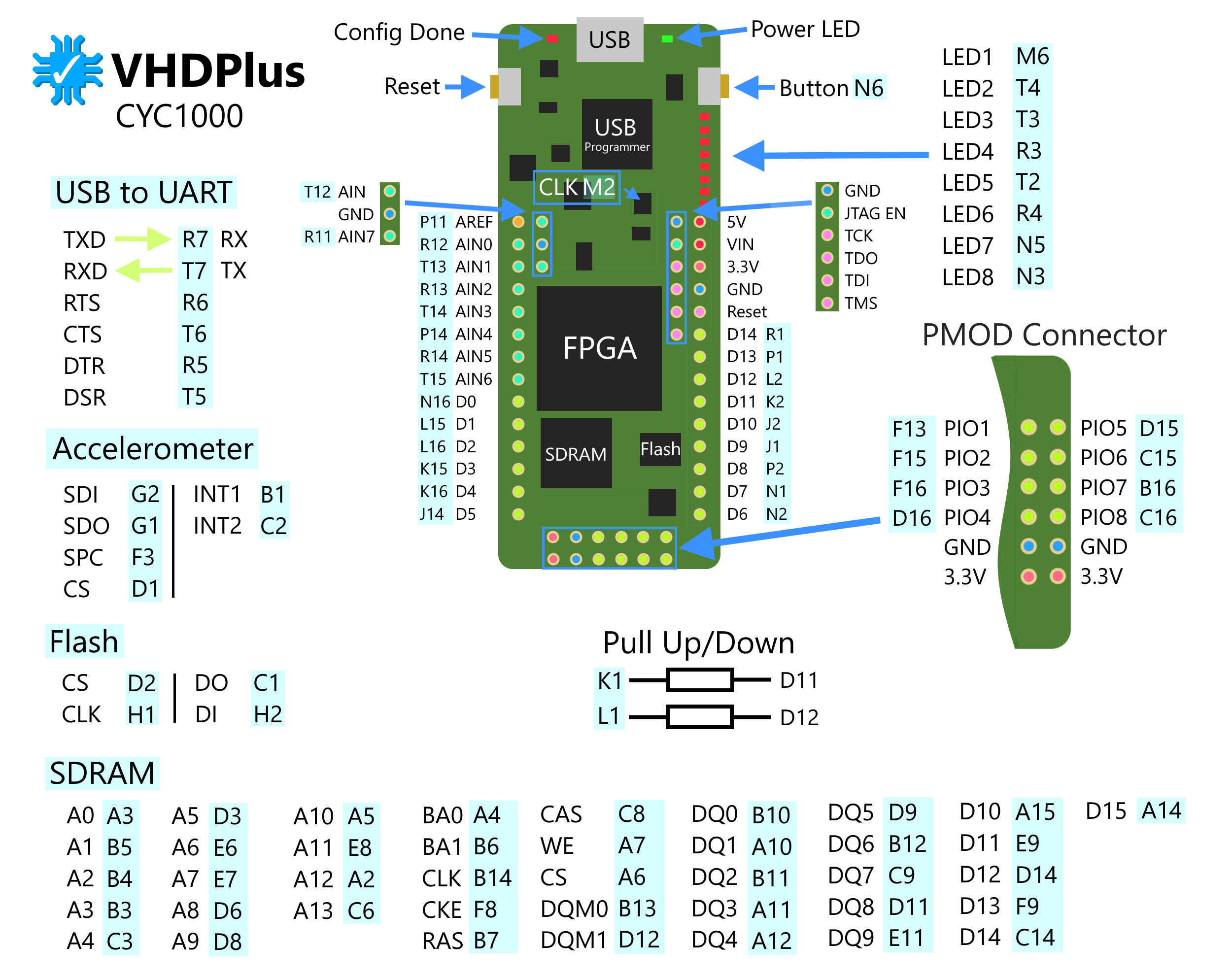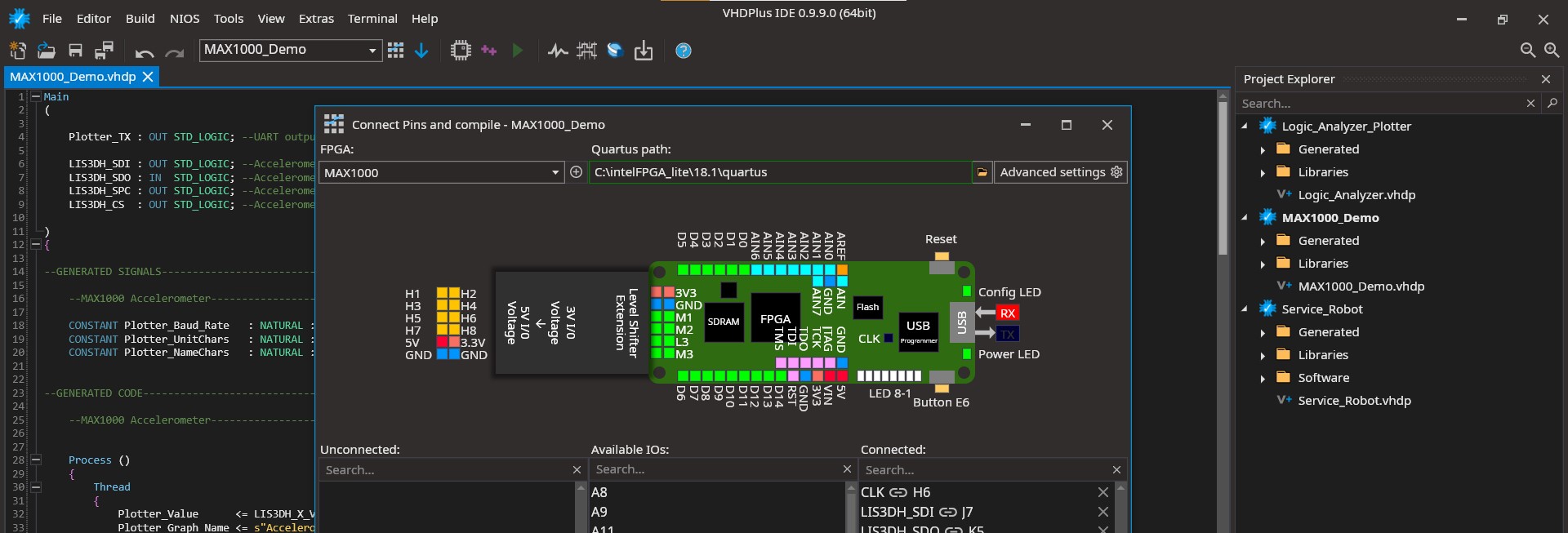CYC1000
If you want to work on FPGA projects in a team or work on Edge-AI, you can check out ONE WARE Studio!

The CYC1000 FPGA Development Board is for everybody who needs more logic elements than you get with the MAX1000. You have an external SDRAM, flash, accelerometer and programmer like with the MAX1000, but instead of the MAX10 with 8,000 (or 16,000 logic elements with the MAX1000 16k), you have a Cyclone 10 FPGA with 25,000 logic elements. The CYC1000 doesn't feature the plug & play and high speed capabilities of the Core MAX10 or the internal ADC and Flash from the MAX10, but you can still profit from the extremly high performance of FPGAs, the onboard programmer or the onboard SDRAM.
Whether you want to program with your own modular NIOS processor using Arduino libraries. Create a 200MHz logic analyzer that you can use together with our serial plotter. Or build a self balancing robot together with the onboard accelerometer. The capabilities of this development board are way beyond the usual microcontroller board you could get for this price.
CYC1000 Overview

⚠️ 3.3V I/O Voltage! Use Level Shifter to Connect 5V Hardware
The CYC1000 board is a low-cost starter board for the new Intel FPGA family Cyclone10. The board can be used for evaluation or also in a customized version as qualified solution in an end product. With the implemented Arrow USB Programmer2, it’s a full featured plug&play solution without additional costs. It’s available as standard version, but can also be ordered in a customized variant, depending on your requirements. The CYC1000 is also perfect for implementing a flexible softcore microcontroller, like NIOS II from Intel.
With the onboard Reset-Button, the FPGA loads the program from flash that was last programmed with long-term programming.
Source: Arrow Electronics
Specs
Cyclone 10 FPGA (10CL025YU256C8G):
Logic Elements - 25,000
RAM - 594 Kb
PLL - 4
- > 300 MHz
18 x 18 Multiplier - 66
SDRAM (W9864G6JT-6): - 64 Mb
Flash (EPCQ16A): - 16 Mb
Oscillator (DSC6011ME2A): - 12 MHz
Software
Don't be overwhelmed by all the features of the CYC1000. Because of the deep integration in the VHDPlus IDE, you don't have to think about where to connect the SDRAM and how to set the I/O voltage. The I/Os are already defined in the libraries and in the graphical editor, you can can just click on the pin to connect.

Reasons for an FPGA
1. Speed
With an FPGA you can not only program software, but also hardware. Here is a quick comparison:
| Software | Hardware | |
|---|---|---|
| Parallel Processes | Usually 1 | As many as needed |
| Cycles for one operation | From 4 up to dozens depending on operation | 1 |
| Operations per Cycle | 1 | As many as needed |
If you need the speed, you program hardware and for the rest you can still put a processor on the FPGA.
2. Versatility
Normally you have e.g. 8 PWM pins and 2 UART, 1 SPI and 1 I²C controller. With an FPGA you just take the UART component from the libraries and add it to your design as often as you want.
But also protocols that are not used that often, like I²S for audio data, are no problem.
As Arduino
IMPORTANT: By programming the hardware with VHDP, the FPGA is much faster. This overview only compares the processor you can add to your FPGA design.
| VHDP Core | |
|---|---|
| Type | 32 Bit |
| Frequency | 116 MHz (50 MHz default) |
| RAM | 64.6 Mb |
| Flash | 16 Mb |
You get more speed and RAM so even image processing gets possible. Next to the processor, you can add additional parallel processes to e.g. control a motor.